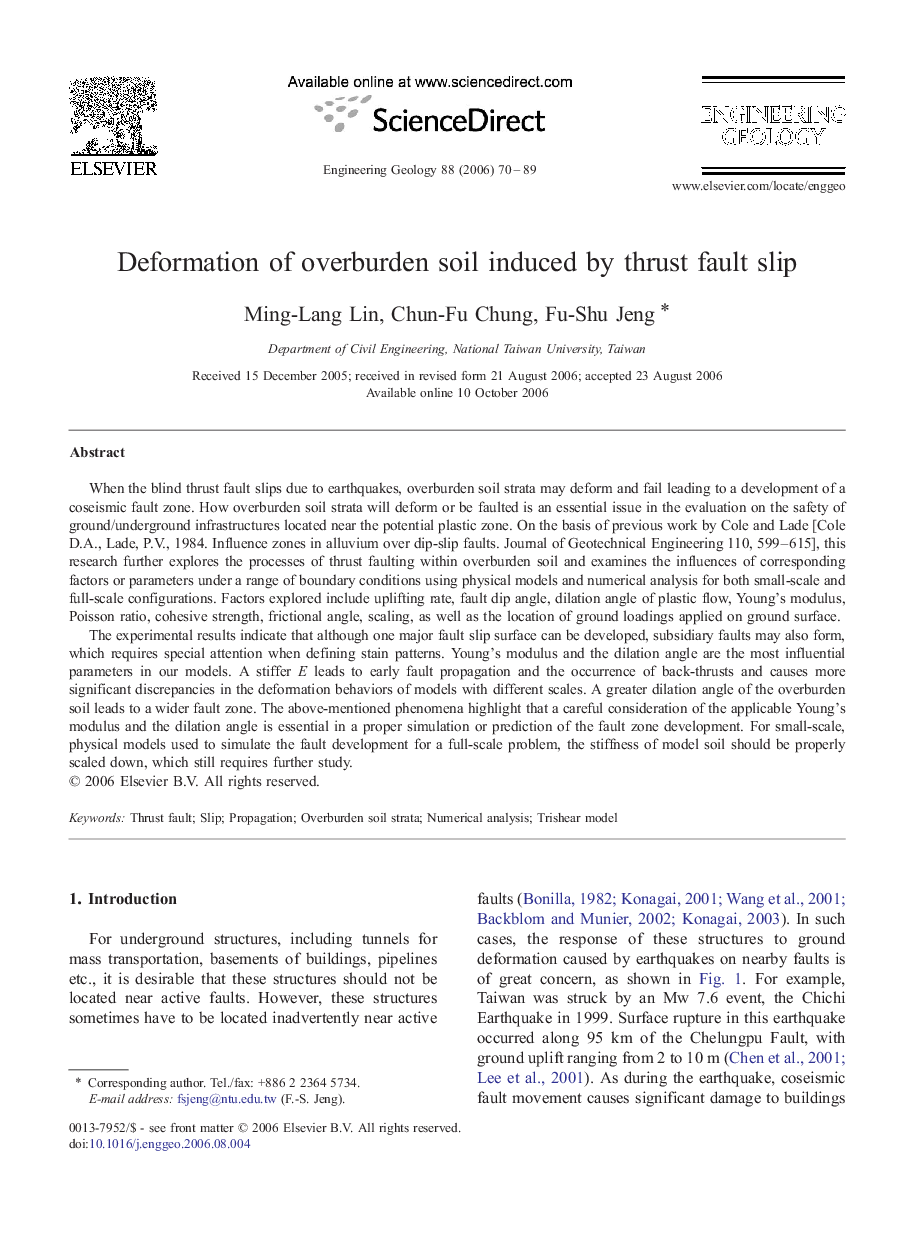| کد مقاله | کد نشریه | سال انتشار | مقاله انگلیسی | نسخه تمام متن |
|---|---|---|---|---|
| 4744897 | 1641914 | 2006 | 20 صفحه PDF | دانلود رایگان |

When the blind thrust fault slips due to earthquakes, overburden soil strata may deform and fail leading to a development of a coseismic fault zone. How overburden soil strata will deform or be faulted is an essential issue in the evaluation on the safety of ground/underground infrastructures located near the potential plastic zone. On the basis of previous work by Cole and Lade [Cole D.A., Lade, P.V., 1984. Influence zones in alluvium over dip-slip faults. Journal of Geotechnical Engineering 110, 599–615], this research further explores the processes of thrust faulting within overburden soil and examines the influences of corresponding factors or parameters under a range of boundary conditions using physical models and numerical analysis for both small-scale and full-scale configurations. Factors explored include uplifting rate, fault dip angle, dilation angle of plastic flow, Young's modulus, Poisson ratio, cohesive strength, frictional angle, scaling, as well as the location of ground loadings applied on ground surface.The experimental results indicate that although one major fault slip surface can be developed, subsidiary faults may also form, which requires special attention when defining stain patterns. Young's modulus and the dilation angle are the most influential parameters in our models. A stiffer E leads to early fault propagation and the occurrence of back-thrusts and causes more significant discrepancies in the deformation behaviors of models with different scales. A greater dilation angle of the overburden soil leads to a wider fault zone. The above-mentioned phenomena highlight that a careful consideration of the applicable Young's modulus and the dilation angle is essential in a proper simulation or prediction of the fault zone development. For small-scale, physical models used to simulate the fault development for a full-scale problem, the stiffness of model soil should be properly scaled down, which still requires further study.
Journal: Engineering Geology - Volume 88, Issues 1–2, 22 November 2006, Pages 70–89